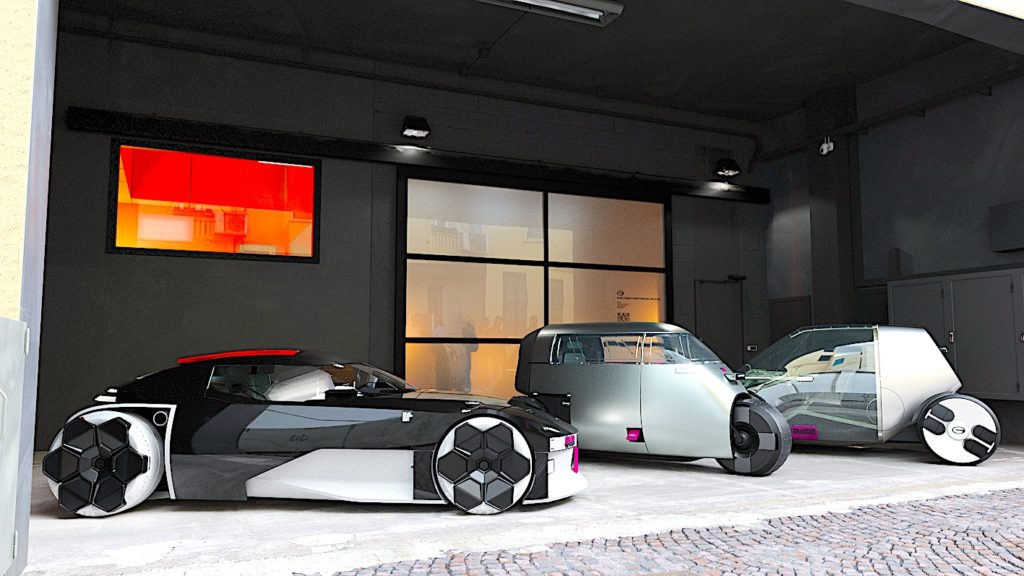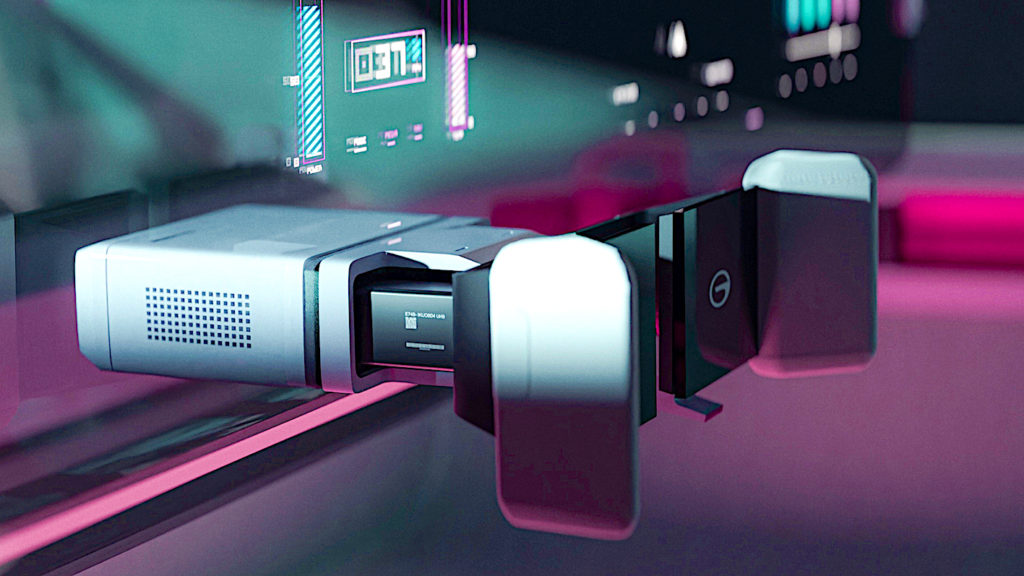
The city wants to exclude the car? Well, Stéphane Janin’s team has designed three machines that can reconcile urban driving, fun and efficiency!

The European studio of Chinese manufacturer GAC, masterfully led by the duo Stéphane Janin and Yann Jarsallé -see the interview with Stéphane Janin here: http://lignesauto.fr/?p=32818 – is in the habit of celebrating Milan Design Week in its own way. Logical, since the studio is based in the heart of the Italian city, on Via Tortona.

And while the Stellantis group has had to change the name of its Milano, Alfa Romeo’s new B-segment crossover, Stéphane Janin and his team have decided to use concepts with a strong Italian flavour, such as the Isetta and the Piaggio Ape (below). A tasty wink…

THE VIDEO :
The GAC advanced design studio in Milan has come up with three urban mobility concepts. While almost everything has already been designed in this field, without even going back as far as Peugeot’s City Toys at the Paris Motor Show in 2000 or, closer to home, the Mobilize Duo and Bento, it has to be said that the three concepts imagined by Stéphane Janin’s team of young designers are fresh and full of tricks.

Technically, the three small vehicles – City Pod, City Box and City Run – are all based on a modular electric ‘powertrain’ module. This integrates the batteries and drive components into a single unit designed for easy replacement. This interchangeable system allows the powertrain to be changed quickly from one vehicle to another, reducing downtime for maintenance and repairs.

By combining batteries and drive systems, efficiency is maximised, making it possible to optimise the performance and efficiency of several vehicles. Ultimately, it’s a practical, flexible solution for electric vehicle operators that promotes sustainable mobility.
CITY POD, BELOW

Stéphane Janin does not hesitate to make references to Italy in this project: “City Pod is the daily vehicle of the elegant Milanese in a hurry. Right from the start of the project, we were inspired by the pretty Isetta of the 50s.” A small two-seater for the city is certainly nothing new, but the idea of a totally transparent cabin bubble is unprecedented.

The vehicle’s main feature is the transparent bubble that covers a self-supporting chassis with integrated interior fittings, batteries and powertrain. The panoramic glass eliminates blind spots to make manoeuvring in city traffic easier, while allowing maximum light into the cabin.

Tailor-made luggage behind the seats optimises the use of space and enhances convenience by giving passengers easy access to their personal belongings. A feature that doesn’t detract from the sleek, elegant interior design.

CITY BOX, BELOW

Here too, the small team of designers at the studio headed by Stéphane Janin has made reference to Italy: “City Box is the compact and robust delivery vehicle. We wanted to revive that great Italian design approach found on the 1948 Piaggio Ape, a three-wheeled vehicle.”

He goes on to say that “the presence of a rucksack-style boot on a city delivery car optimises loading space, adjusting to efficiently accommodate parcels of varying sizes and quantities. Its flexible design simplifies the delivery process, ensuring fast and organised transport of goods in an urban environment.“

The City Box, which is more playful than the Mobilize Bento, also seems conceptually more mature. Admittedly, it is not (yet?) programmed for mass production, unlike the French model. But it is perfectly suited to the principle of last-mile delivery by being versatile.

CITY RUN, BELOW

And just because you’re moving around town doesn’t mean you have to be depressed (you don’t necessarily only drive in Paris…), so the team at the GAC studio in Milan has opened the door wide to the parent company in China by coming up with a brand new concept.

It is a 2-seater coupé the size of a compact car. Stéphane Janin and the teams explain that “we imagined young, trendy Chinese users driving it and congregating in the Dongshankou district of Guangzhou.” A district that is indeed barely effervescent, where people come to visit historic mansions, many of which have been renovated to become upmarket bars, cafés, restaurants, clubs and galleries.

On board, City Run adopts a transparent display that combines the advantages of traditional head-up displays and touch-screen interfaces. Driving information can be combined across the entire surface in front of the driver and passenger, creating a unique augmented reality driving experience.

The GAC team in Milan also had fun designing light, so they rethought the weight-generating seats (only two places on board). Their solution? Air! “Yes, it’s in this spirit of lightening that we’ve come up with seats filled with air! Can’t wait to test it out at the wheel. But the solution is not so crazy if you remember that Renault tested an R16 with ball seats, which were very fashionable in the 1970s.

These three refreshing little machines once again demonstrate the creative abilities of the Milan-based team, led by a Frenchman whose right-hand man is… French, and they both worked together at Renault. And above all, I’d like to finish by pointing out that these studies did not make use of artificial intelligence, as Stéphane Janin points out at the end of his presentation, below.


The design team at the GAC advanced design centre in Milan:


